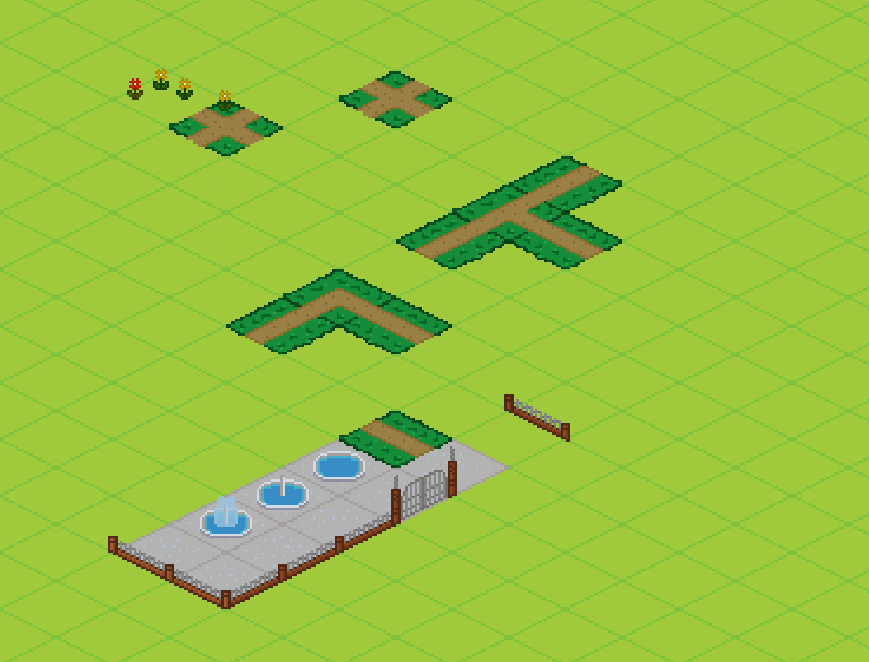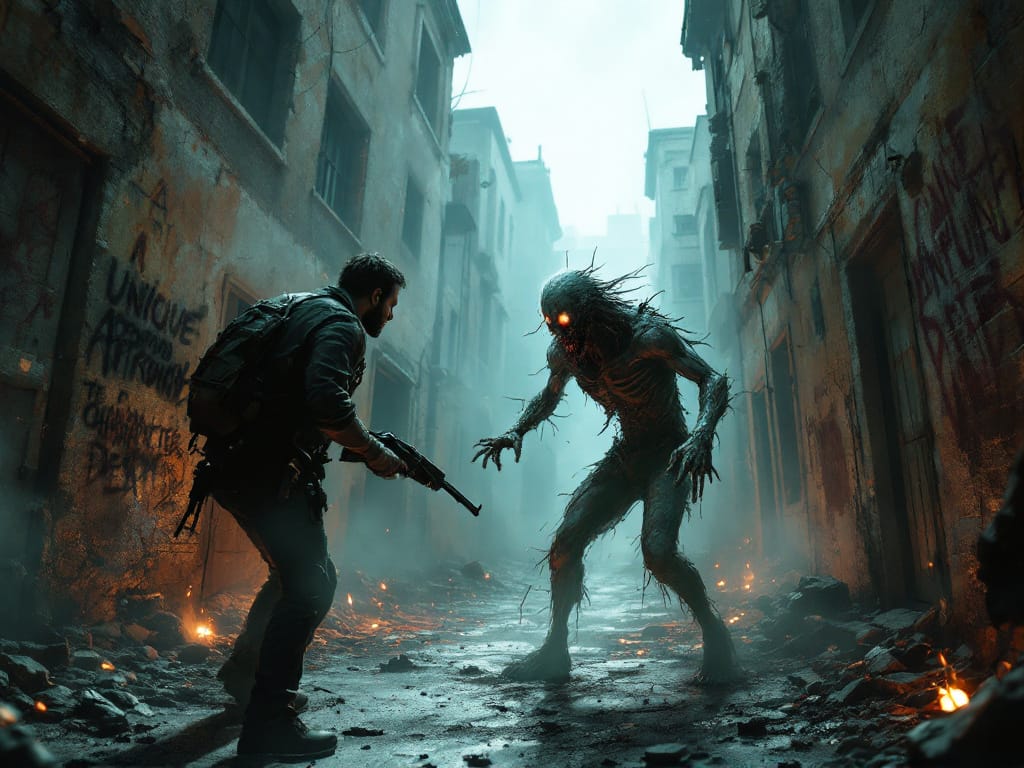Introduction to Player’s Psychology

Player psychology is a fascinating field that explores the inner workings of a player’s mind and emotions when engaging with games. Understanding player psychology is crucial for game designers because it helps them create experiences that captivate and engage players on a deeper level. By tapping into the psychology of players, designers can create games that are addictive, immersive, and ultimately more successful.
Player psychology encompasses various aspects, such as motivation, emotions, behavior, and decision-making. By understanding these factors, game designers can tailor their games to resonate with players and keep them coming back for more. From designing compelling narratives and utilizing game mechanics to incorporating rewards and progression systems, every element of a game can be strategically designed to tap into player psychology.

Moreover, player psychology extends beyond an individual experience. Social interactions and multiplayer gameplay can significantly impact player engagement and create a sense of community within the game. Additionally, ongoing updates and incorporating player feedback allow for continuous improvement and encourage long-term engagement.
In conclusion, player psychology is an essential tool for game designers to create engaging and addictive games. By understanding the motivations, emotions, and behaviors of players, designers can harness the power of psychology to craft memorable experiences that keep players hooked.I Understanding the importance of player psychology
Understanding the importance of player psychology is crucial for game designers who want to create engaging and addictive games. Player psychology allows designers to tap into the motivations, emotions, and behaviors of players, giving them valuable insights into what keeps players hooked and coming back for more.
By understanding player psychology, designers can tailor their games to create a positive user experience that resonates with players on a deep level. They can utilize psychological tricks and techniques to create immersive and engaging game worlds, tap into player emotions through storytelling, and design game mechanics that keep players engaged and challenged.
Player psychology also plays a crucial role in creating effective reward and progression systems. Understanding how rewards impact player motivation allows designers to create systems that provide the right balance of challenge and reward, keeping players motivated and engaged.
Moreover, player psychology extends beyond the individual experience. It also encompasses the social and multiplayer aspects of gaming, where interactions and community-building can significantly impact player engagement.
In conclusion, understanding and harnessing player psychology is a fundamental aspect of game design. By incorporating psychological principles into the design process, designers can create games that hook and engage players, keeping them coming back for more.

II The impact of player psychology on game engagement
Understanding player psychology is critical for game designers as it directly impacts game engagement. By tapping into players’ motivations, emotions, and behaviors, designers can create games that resonate with players on a deep level, enticing them to continue playing and fostering long-term engagement.
Player psychology allows designers to understand what drives players to play games and what keeps them hooked. By leveraging psychological tricks and techniques, designers can create immersive and engaging game worlds that captivate players’ attention. They can utilize storytelling to evoke emotions, design intuitive and user-friendly interfaces to enhance the player experience, and incorporate game mechanics that provide a balance of challenge and reward.
Furthermore, understanding player psychology helps in creating effective reward and progression systems. By acknowledging the impact of rewards on player motivation, designers can structure systems that keep players motivated and engaged. This knowledge also enables designers to adjust the difficulty levels and pacing of the game, ensuring players are consistently challenged and rewarded.
In multiplayer and social gaming, understanding player psychology is crucial for fostering community-building and interactions that enhance player engagement. By leveraging the social aspect of gaming, designers can create experiences that not only appeal to individuals but also encourage collaboration and competition among players.
Overall, player psychology is a powerful tool that game designers can utilize to create games that hook and engage players. By incorporating psychological principles into the design process, designers can create games that provide a highly enjoyable and immersive experience, enticing players to keep coming back for more.

Understanding Player Motivation
Player motivation is a key aspect of player psychology that game designers must comprehend in order to create engaging and captivating games. By understanding what motivates players to play games, designers can tailor their game experiences to meet those motivations, thereby keeping players engaged for longer periods of time.
One important aspect of player motivation is the desire for achievement and mastery. Many players are motivated to continuously improve their skills and reach new levels of achievement. Designers can tap into this motivation by incorporating challenging gameplay mechanics, providing opportunities for skill development, and offering rewards for achievements.
Another common motivation among players is the desire for social interaction and connection. This can be achieved through multiplayer gameplay, cooperative missions, or even social features within single-player games. By creating opportunities for players to connect with others, designers can foster a sense of community and increase player engagement.
Additionally, players are often motivated by a desire for immersion and escapism. Designers can create immersive game worlds with captivating narratives and rich environments to fulfill this motivation. By allowing players to become fully absorbed in the game world, designers can keep players engaged and invested in the experience.
In summary, understanding player motivation is essential for designing games that keep players engaged. By incorporating elements that tap into players’ motivations for achievement, social interaction, and immersion, designers can create games that keep players hooked and coming back for more.

I Different types of player motivation
There are various types of player motivations that drive individuals to engage with games. Understanding these motivations is crucial for creating experiences that resonate with players.
- Achievement: Many players are motivated by a desire for achievement and mastery. They seek to improve their skills, overcome challenges, and reach new levels of success. Designers can tap into this motivation by incorporating challenging gameplay mechanics, offering rewards for achievements, and providing opportunities for skill development.
- Social Interaction: Some players are motivated by a desire for social connection and interaction. They enjoy playing games with friends, collaborating on missions, or competing against others. Game designers can create opportunities for social engagement by incorporating multiplayer gameplay, cooperative missions, or social features within single-player games.
- Immersion and Escapism: Another common motivation among players is the desire for immersion and escapism. They seek to be transported to compelling game worlds with rich narratives and captivating environments. Designers can fulfill this motivation by creating immersive game worlds, engaging narratives, and realistic or fantastical environments.
- Discovery and Exploration: Some players are motivated by a sense of curiosity and the desire to explore new territories or uncover hidden secrets. Designers can tap into this motivation by incorporating open-world exploration, hidden collectibles, and rewarding players for their curiosity.
By understanding and incorporating these different player motivations into game design, developers can create experiences that resonate with players and keep them engaged for longer periods of time.

II How to tap into player motivation to keep them engaged
To tap into player motivation and keep them engaged, game designers can implement several strategies. Here are some techniques that can help create an engaging experience for players:
- Setting Clear Goals: Providing players with clear and achievable goals gives them a sense of purpose and progress. By breaking down larger objectives into smaller, attainable tasks, designers can keep players motivated to reach their goals.
- Offering Rewards: Incorporating a reward system can greatly enhance player motivation. By giving players tangible rewards, such as in-game currency, items, or achievements, designers provide a sense of accomplishment and incentivize continued engagement.
- Providing Feedback: Regular feedback on player progress and performance is essential for maintaining motivation. Positive reinforcement and constructive feedback can help players understand their strengths and areas for improvement, driving them to continue playing and growing their skills.
- Personalizing the Experience: Recognizing and embracing player individuality can greatly enhance motivation. Designers can offer customization options, allowing players to tailor their experience to their preferences, and offer choices that have a meaningful impact on the game’s narrative or outcome.
- Building a Sense of Community: Encouraging social interaction and fostering a sense of community can deepen player engagement. Features such as online leaderboards, multiplayer modes, or forums can create opportunities for collaboration, competition, and connecting with other players.
By incorporating these techniques, designers can tap into player motivation, keeping them engaged and immersed in the game for longer periods of time.

Creating Immersive and Engaging Game Worlds
In the world of game design, creating immersive and engaging game worlds is crucial to capturing the attention and imagination of players. By carefully crafting the environment, narrative, and aesthetics of a game, designers can transport players into a whole new reality and keep them engaged for hours on end.
One key aspect of creating immersive game worlds is building captivating narratives. By developing a compelling story that draws players in and keeps them invested, designers can create an emotional connection that drives gameplay. Engaging narratives can be achieved through intricate plotlines, well-developed characters, and meaningful choices that impact the game’s outcome.
In addition to storytelling, game mechanics play a vital role in creating immersion. By utilizing game mechanics that align with the game’s world and narrative, designers can enhance player engagement. Whether it’s realistic physics, interactive environments, or strategic gameplay, incorporating mechanics that are intuitive and rewarding can make the game world feel more believable and interactive.
Furthermore, attention to aesthetics can greatly contribute to immersion. Designers can focus on creating visually stunning graphics, realistic sound effects, and immersive music to transport players into the game world. Attention to detail, such as realistic lighting, atmospheric effects, and believable character animations, can make the game world feel alive and captivating.
Ultimately, the goal of creating immersive and engaging game worlds is to provide players with an experience that feels both enjoyable and meaningful. When players are fully immersed in the game world, they are more likely to become emotionally invested and committed to the gameplay, resulting in longer play sessions and greater overall engagement.

I Building captivating game narratives
Building captivating game narratives is essential for hooking and engaging players in any game. The narrative serves as the backbone of the gaming experience, driving the player’s motivation and emotional investment.
To create a captivating game narrative, game designers must craft an intriguing story that captures the player’s attention from the start. This involves developing well-defined characters with relatable motives and personalities. By giving players characters to care about and root for, the narrative becomes more impactful and draws them into the game world.
Additionally, a compelling narrative includes an intricate plotline with twists, turns, and conflicts that keep players engaged and guessing what will happen next. By presenting players with meaningful choices that impact the game’s outcome, the narrative becomes more immersive and personalized, further enticing players to continue playing.
Furthermore, designers can use storytelling techniques such as foreshadowing, pacing, and character development to create a sense of progression and build anticipation. By structuring the narrative in a way that gradually reveals new information and surprises, players are continuously engaged and motivated to uncover the next chapter of the story.
Overall, building captivating game narratives requires a combination of well-developed characters, intriguing plotlines, meaningful choices, and effective storytelling techniques. By mastering these elements, game designers can create immersive worlds that keep players hooked and coming back for more.
II Utilizing game mechanics to enhance player engagement
Game mechanics play a pivotal role in enhancing player engagement and keeping them hooked to the game. These are the rules, actions, and systems that govern gameplay and provide a framework for the player’s interaction with the game world. By strategically designing and implementing game mechanics, designers can create an immersive gameplay experience that continuously engages and challenges players.
One effective game mechanic is the progression system, which rewards players for their accomplishments and motivates them to keep playing. This can include unlocking new levels, abilities, or items as the player progresses through the game. By providing a sense of growth and achievement, the progression system keeps players engaged and encourages them to invest more time and effort into the game.
Another important game mechanic is the concept of challenge and reward. Designers must strike a balance by offering challenges that are difficult enough to keep players engaged but not so difficult that they become frustrated. When players overcome a challenge, they are rewarded, whether it be with points, items, or a sense of accomplishment. This cycle of challenge and reward keeps players motivated and engaged.
Additionally, game mechanics such as leaderboards, achievements, and social interactions can enhance engagement by introducing a competitive element. Players are motivated to perform better to top the leaderboards or earn achievements, while social interactions like multiplayer gameplay or cooperative missions foster a sense of community and encourage players to continue playing.
By utilizing game mechanics effectively, designers can tap into player psychology and create games that are not only enjoyable but also highly engaging and addictive. These mechanics provide a framework for player interaction, progression, challenges, rewards, and social interactions, all of which contribute to a more immersive and engaging gaming experience.

Incorporating Rewards and Progression Systems
Incorporating rewards and progression systems in game design is crucial for keeping players engaged and motivated. By providing incentives and a sense of growth, these systems encourage players to continue playing and progressing through the game.
Rewards play a significant role in player motivation. Whether it’s in the form of virtual currency, items, or exclusive content, rewards give players a tangible sense of achievement and progress. They act as a positive reinforcement, reinforcing desirable behaviors and motivating players to strive for more. A well-designed reward system also provides a sense of anticipation and excitement, keeping players hooked and eager to see what lies ahead.
Progression systems, on the other hand, give players a clear path to follow and provide a sense of purpose. As players advance through levels, unlock new abilities, or reach milestones, they feel a sense of accomplishment and satisfaction. Progression systems also create a sense of investment as players become more attached to their in-game progress, increasing the likelihood that they will continue playing.
To effectively incorporate rewards and progression systems, designers must carefully balance challenge and reward. The challenges should be appropriately difficult to provide a sense of accomplishment when overcome, while the rewards should be enticing enough to drive player motivation. Regular updates and new content can further enhance engagement by giving players something new to strive for and unlock.
In summary, rewards and progression systems are essential tools for keeping players engaged and motivated. By implementing well-designed reward structures and clear progression paths, designers can create an immersive and addictive gameplay experience that keeps players coming back for more.
I The role of rewards in player motivation
Rewards play a crucial role in motivating players to engage with a game and continue playing. They provide a sense of accomplishment and progress, which activates the brain’s reward system and releases feel-good neurotransmitters like dopamine. This positive reinforcement strengthens the association between the desired behavior (playing the game) and the pleasurable outcome (receiving the reward), creating a cycle of motivation and engagement.
When designing rewards, it is important to consider their value and relevance to the player. Rewards should be meaningful and aligned with the player’s goals and desires within the game. This can include virtual currency, items, achievements, or access to exclusive content. By offering desirable rewards, game designers can create a sense of anticipation and excitement, stimulating player motivation and engagement.
Furthermore, the timing and frequency of rewards also affect player motivation. Intermittent reinforcement, where rewards are given unpredictably rather than consistently, has been shown to be more effective in maintaining player engagement. This taps into the psychology of intermittent reward schedules, which mimic the unpredictability of real-life experiences and can lead to increased motivation and extended gameplay.
Overall, a well-designed reward system can significantly enhance player motivation and engagement. By incorporating meaningful rewards and utilizing intermittent reinforcement, game designers can effectively hook and keep players engaged in their games.
II Designing effective progression systems to keep players hooked
Progression systems play a vital role in keeping players engaged and motivated in a game. By providing a clear sense of progress and advancement, these systems give players goals to strive for and a sense of accomplishment as they move forward. Designing an effective progression system involves incorporating various elements that cater to player psychology and keep them hooked to the game.
One key aspect of a successful progression system is setting achievable and meaningful goals. Players should have a clear understanding of what they need to do to progress and feel a sense of satisfaction when they achieve those goals. This can be done by breaking down larger objectives into smaller, manageable tasks and providing clear feedback and rewards upon completion.
Furthermore, offering a variety of content and challenges at different difficulty levels ensures that players stay engaged throughout their journey. This allows for a sense of growth and development as players face new and more demanding tasks, keeping them invested in the game.
Additionally, allowing players to customize and personalize their progression can enhance their sense of ownership and investment. By providing choices, such as different paths, abilities, or upgrades, players can tailor their experience to their preferences and feel a sense of uniqueness that keeps them engaged.
Regular updates and new content also play a crucial role in maintaining player interest. By introducing new challenges, rewards, or storylines, game designers can continually provide fresh and exciting experiences, giving players further incentive to continue playing.
In summary, designing effective progression systems involves setting meaningful goals, providing a variety of challenges, allowing for customization, and regularly updating the game. By incorporating these elements, game designers can ensure that players remain hooked and engaged for the long term.
Social and Multiplayer Aspects in Game Design
With the rise of online gaming, social and multiplayer aspects have become an integral part of game design. These features not only enhance the overall player experience but also contribute to increased engagement and longevity of the game.
Incorporating social interactions into gameplay can create a sense of community and connection among players. This can be achieved through features such as in-game chat, forums, and multiplayer modes. By encouraging players to interact and collaborate with each other, game designers can foster a sense of camaraderie and competition, which in turn leads to increased player engagement.
Multiplayer gameplay offers a unique and dynamic experience that keeps players coming back for more. Whether it’s team-based battles or cooperative missions, playing with or against other players adds an extra layer of excitement and unpredictability. The opportunity to challenge and test one’s skills against real opponents creates a sense of accomplishment and provides a continuous source of motivation.
Furthermore, social and multiplayer aspects provide an avenue for ongoing player engagement. Events, tournaments, and leaderboards not only allow players to showcase their skills but also provide opportunities for recognition and reward. By tapping into the competitive nature of players and fostering a sense of community, game designers can keep players engaged and invested in the game for the long term.
In conclusion, incorporating social and multiplayer aspects into game design is crucial for player engagement. By creating opportunities for social interactions, fostering competition, and providing ongoing events, game designers can create immersive and engaging experiences that keep players hooked.
I Leveraging social interactions to increase game engagement

Incorporating social interactions into gameplay can significantly increase game engagement and create a sense of community among players. By providing features such as in-game chat, forums, and multiplayer modes, game designers can create opportunities for players to connect and collaborate with each other.
One way to leverage social interactions is by encouraging players to form alliances or join guilds within the game. This allows players to work together towards common goals, whether it’s conquering dungeons or participating in PvP battles. Not only does this foster a sense of camaraderie, but it also enhances the overall gameplay experience by promoting teamwork and strategy.
In addition to in-game interactions, game designers can also integrate social media integration, allowing players to share their achievements and experiences with friends and followers. This not only helps players stay connected outside of the game but also serves as a form of free advertising, as their friends may become interested in joining the game as well.
Furthermore, organizing events or tournaments within the game’s community can create a sense of excitement and competition. By providing leaderboards and rewards for top performers, game designers can motivate players to actively participate and strive for success.
Overall, leveraging social interactions in game design is a powerful tool for increasing game engagement. By promoting collaboration, fostering relationships, and providing opportunities for competition, game designers can create a vibrant and engaging community that keeps players coming back for more.
II Exploring the benefits of multiplayer gameplay
Multiplayer gameplay offers a range of benefits that can greatly enhance player engagement and create a dynamic gaming experience. Here are some key advantages of incorporating multiplayer features into game design:
- Social Interaction: Multiplayer games allow players to connect and interact with others, fostering a sense of community and camaraderie. This social aspect adds depth and richness to the gaming experience, providing opportunities for collaboration, competition, and shared achievements.
- Increased Challenges: Multiplayer gameplay introduces the element of human unpredictability, making each session unique and challenging. Players must strategize and adapt to the actions and behaviors of their opponents, adding an exciting and dynamic element to the game.
- Longevity: Multiplayer games have the potential for extended playability, as the unpredictable nature of human opponents keeps the gameplay fresh and engaging. With the presence of a thriving player community, multiplayer games can enjoy a longer lifespan and ongoing updates.
- Cooperative Play: Multiplayer games often provide cooperative gameplay modes, allowing players to team up and work together towards shared goals. This collaborative experience encourages teamwork, communication, and problem-solving skills, promoting a sense of accomplishment and satisfaction.
In summary, incorporating multiplayer features into game design brings numerous benefits, including social interaction, increased challenges, longevity, and opportunities for cooperative play. These features can greatly enhance player engagement and create a vibrant and enduring gaming community.
Retaining Players and Encouraging Long-Term Engagement

Retaining players and encouraging long-term engagement is crucial for the success of any game. To achieve this, game developers must continuously provide new content updates and expansions to keep players interested and invested in the game. These updates can include new levels, challenges, characters, or storylines, ensuring that players have something new to explore and discover. By offering regular updates, developers can create a sense of anticipation among players, encouraging them to keep coming back for more.
Additionally, implementing player feedback is essential for improving engagement and retention. By listening to the players’ suggestions and concerns, developers can address any issues, balance gameplay mechanics, and introduce new features that align with the players’ preferences. This not only enhances the overall gaming experience but also creates a sense of involvement and ownership among players, making them feel valued and more likely to stay engaged with the game.
In conclusion, retaining players and encouraging long-term engagement requires a constant flow of new content updates and the willingness to listen to player feedback. By investing in these strategies, game developers can create a loyal and dedicated player base that continues to engage with the game for an extended period of time.
I Providing ongoing content updates and expansions
Providing ongoing content updates and expansions is a key strategy for retaining players and encouraging long-term engagement in games. By continuously offering new content, developers can keep players interested and invested in the game experience. These updates can include new levels, challenges, characters, or storylines, ensuring that players have something fresh and exciting to explore and discover.
Regular content updates create a sense of anticipation among players, as they eagerly await new content and updates. This anticipation drives them to keep coming back to the game, maintaining their engagement and prolonging their playtime.
Expansions also play a crucial role in retaining players and extending their engagement. These expansions can introduce new game features, gameplay mechanics, or even entirely new game modes. By providing expansions, developers provide players with a sense of progression and a reason to continue playing and exploring the game world.
Additionally, ongoing content updates and expansions demonstrate the developer’s commitment to providing a fulfilling and evolving gaming experience. This commitment enhances player satisfaction and fosters a sense of loyalty towards the game and the developer.
In conclusion, providing ongoing content updates and expansions is an effective way to retain players and encourage them to stay engaged with the game. By continually offering new content and expanding the game’s features, developers can create a vibrant and thriving gaming community.
II Implementing player feedback to improve engagement and retention
Implementing player feedback is crucial for improving engagement and retention in games. By actively listening to players and addressing their concerns and suggestions, developers can create a more enjoyable and immersive gaming experience that keeps players hooked.
One way to gather player feedback is through surveys or questionnaires. These can be sent directly to players after they complete certain milestones or reach a specific level in the game. By asking specific questions about their experience, developers can gain valuable insights into what aspects of the game are working well and what areas need improvement.
In addition to surveys, developers should also encourage players to provide feedback through in-game forums or community platforms. This allows players to voice their opinions and share their ideas with both the development team and other players. Engaging in open and constructive discussions with players can help developers identify potential issues and develop solutions to address them.
Acting on player feedback is equally important. Developers should prioritize implementing changes and updates based on the feedback received. This shows players that their opinions are valued and that the development team is actively working to improve the game based on their input.
By incorporating player feedback into the development process, developers can create a more engaging and player-centric game that keeps players coming back for more.
Video on Player’s psychology
Conclusion Player’s Psychology
In conclusion, understanding player psychology is essential for creating engaging and immersive games that capture and retain players’ attention. By tapping into player motivation, building captivating narratives, implementing effective progression systems, leveraging social interactions, and incorporating player feedback, developers can design games that hook and engage players for the long term.
Player psychology plays a crucial role in shaping the overall gaming experience. By understanding the factors that drive players, such as achievement, mastery, social interaction, and self-expression, developers can tailor their games to meet these needs. This includes designing intuitive interfaces, balancing challenge and reward, and creating captivating game worlds that appeal to players’ emotions and interests.
Furthermore, ongoing research and adaptation are key in keeping up with the ever-evolving landscape of player psychology. By staying informed about new trends and insights, developers can continue to refine their game design strategies and provide a positive user experience that keeps players engaged.
Ultimately, by understanding and harnessing player psychology, developers can create games that captivate and retain players, fostering a loyal and dedicated player base. As the gaming industry continues to evolve, incorporating player psychology into game design will remain a vital aspect of creating successful and engaging games.
I Summary of key techniques for hooking and engaging players
In summary, there are several key techniques for hooking and engaging players in games. By understanding player psychology and motivations, developers can create immersive and captivating game worlds that appeal to players’ emotions and interests. Building captivating narratives and incorporating game mechanics that enhance player engagement are essential in keeping players hooked.
Rewards and progression systems play a crucial role in player motivation, providing a sense of achievement and driving players to continue playing. Leveraging social interactions and incorporating multiplayer gameplay can also increase engagement by fostering a sense of community and competition among players.
To retain players and encourage long-term engagement, providing ongoing content updates and expansions is crucial. Additionally, implementing player feedback to improve game design and constantly adapting to the evolving landscape of player psychology is essential.
By employing these techniques and strategies, game developers can create games that tap into player psychology, provide a positive user experience, and keep players engaged and coming back for more.
II The importance of ongoing research and adaptation in player psychology
The importance of ongoing research and adaptation in player psychology cannot be overstated. As players evolve and their preferences change, game developers must stay up to date with the latest trends and understand the shifting landscape of player psychology. Conducting continuous research and staying informed allows developers to adapt their game design strategies to better engage and hook players.
By staying current with research on player motivation, behavior, and preferences, developers can gain valuable insights into what drives players to engage with games. This knowledge allows for the creation of more targeted and effective game mechanics, narratives, and rewards that resonate with players.
Additionally, ongoing research helps developers identify emerging trends and new technologies that can be integrated into game design. This could include advancements in virtual reality, augmented reality, or new forms of player interaction. By embracing these innovations and adapting their games accordingly, developers can stay ahead of the curve and provide fresh and captivating experiences for players.
In conclusion, ongoing research and adaptation in player psychology are vital for game developers to keep their games relevant, engaging, and enjoyable for players. By understanding and responding to player preferences and emerging trends, developers can create experiences that hook and engage players for the long term.


















